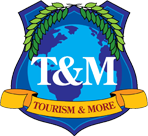Tourism & Health
May 2004
The SARS crisis and other related health crises such as those experienced by the cruise industry ought to be wake-up calls for people in the tourism/travel industry that health has become a major tourism safety issue. Maintaining a healthy environment in travel and tourism areas is especially difficult for at least some of the following reasons. There is no way to screen a visitor so as to know if he/she is carrying a contagious disease. People on holiday or business trips often sleep less, drink more and do not eat the proper foods. Transportation centers such as airports and railway stations as well as airplanes, trains and buses, often have large numbers of people gathered in small, confined spaces with poor air quality. Finally, there is a close relationship in today’s world between stress and travel. Indeed travel may be called the “stressful search for fun.” Medical people are well aware that, as stress rises, our ability to fight off illness decreases. To make matters even more complicated; tourism sites are expected to be without illnesses. Thus, when SARS struck Toronto, despite the fact that more people would die of auto accidents than the disease, the media turned a statistically minor problem into a major tourism panic, causing the unnecessary loss of millions of dollars. To make health safety even more of a challenge, there is the perception within the traveling public that terrorism may attack the health system as a way to destroy large parts of the tourism industry. While so far we have no absolute examples of such an attack, the Philadelphia outbreak of Legionnaires’ disease ought to serve as a warning that such a possibility is not mere science fiction. To aid you in dealing with at least some of the issues concerning tourism and health, Tourism Tidbits now presents to you the following.
- Increase awareness of the importance of health safety before a crisis begins. It is a lot less expensive and a lot simpler to manage a potential problem than to fix a problem once it has occurred. One reason for a health crisis is the cutting of corners to increase profits. Airlines would not have suffered the crisis of economy class syndrome if they had been more generous with space. Accidents often happen simply because no one has taken the time to assess potential risks and dangers. Invite a member of your community’s public health department to address a local tourism industry meeting. Never be defensive regarding health criticisms, but rather find ways to fix these problems and then incorporate the changes into your marketing plan. Make sure you train tourism staffs on tourism health issues such as those mentioned above.
- Develop and define a set of clear objectives regarding health issues within your tourism entity/locale. The objectives should include which health risks have the highest probability of occurring and which ones would have the greatest business impact on your business. Do not confuse probability of occurrence with degree of impact. The probability of a new disease outbreak in Toronto was extremely low, but its consequences were very high.
- Develop a health-crisis plan. In this plan assume that you are in a crisis mode and then make sure to have a clear set of defined responsibilities. Health crises are different from other marketing crises, as the caregivers are also liable to become sick. Therefore, a series of back-up plans and replacement officers may be needed. If your community is not a major medical center, work with airlines and special medical air carriers to develop back-up plans should these services be needed.
- Develop a verification system. One of the problems with a health crisis is that rumors begin to spread and peoples’ confidence begins to decline. Have a plan so that you can verify sources. Are the reports of the disease coming from trained health care professionals or merely from unverifiable sources? In a similar manner, make sure that there is a plan to give out the latest information. Develop a special web page, provide media information that is accurate, and develop links to major medical centers or to locations where people can receive regular updates.
- Define and manage the fear. One of the worst parts of a health crisis is that both locals and visitors may become very fearful. It is essential that your crisis plan work in a way to define what people are afraid of and then begin to manage it. Is the illness spontaneous or provoked? How widespread is it? Is it contagious or confined to a specific group or people or geographic area? Tourism is a voluntary industry and nothing can destroy a tourism industry as much as fear. To manage fear, first work with your own medical teams and then try and obtain confirmation from international bodies such as the world tourism organization and world health organization.
- Know how the World Health Organization (WHO) develops guidelines for issuing health adversaries. The WHO bases its recommendations on such things as: the magnitude of the illness’ outbreak, how contagious it is, and extent to which travelers may export a disease from one region to another.
- Meet with staff(s) to determine short, medium and long term effects. Determine as quickly as possible which businesses will need economic help to weather the health crisis, how will you market your locale after the crisis has passed, and what mistakes were made during the crisis and what changes might you have made.



